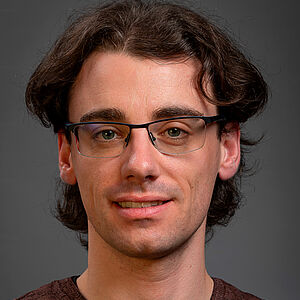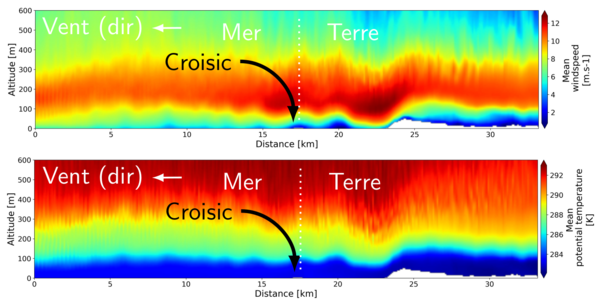
Benjamin Luce
Research topics
Atmopsheric boundary layer
My current research focuses on the simulation and understanding of the atmospheric boundary layer under so-called stable conditions. I have chosen to focus on the study of a particular structure known as the low-level jet. This low-level wind structure (peak velocity is generally reached within the first 500 meters) appears mainly at the end of the day and lasts through the night, peaking in the early hours of the morning. Sunrise changes the stability conditions and destroys the jet, giving way to a convective atmosphere.
The interest in these jets is manifold and the numerous questions remain unanswered:
- Their formation is not fully understood, and observations around the world show that these jets exist in very different configurations (on inclined or non-inclined plains, at the land-sea interface, etc.).
- At the land-sea interface, they offer a potential wind resource for offshore wind farms, but few answers exist on the effects of such a high shear on the blades.
- The structure of turbulence in such a stratified boundary layer challenges existing simulation models. It is an exciting challenge to try to understand what fine simulations (such as DNS or small-scale LES) may provide.
- The presence of a topography, however slight, generates gravity waves that can interact with turbulence. These wave-turbulence interactions are a complex topic, rich in unanswered questions.

According to our needs, two free and open research codes are used:
- WRF (Weather Research and Forecasting) is a numerical weather prediction model. It enables realistic large-scale simulations to be carried out down to very fine resolutions, using nesting methods. The ARPS code, a precursor to WRF, has also been used for multi-scale (and multi-code) nesting.
- microHH is a fluid model for large-scale or direct simulations of the atmopheric boundary layer.
Sea-spray simulations in coastal transition

These three successive simulations over Le Croisic show a parametric situation at the top (turbulence is purely modelled, not resolved), then mesh refinement and the use of LES bring out the turbulent structures that considerably change the observation of the aerosol concentration.
The nested LES WRF - ARPS simulations make it possible to deal with complex terrains and a micro-meteorology that is absent from the meso-scale codes. These delicate simulations reflect the complexity of capturing all the scales in the atmosphere: the large scales give the global trend and the micro-scales that develop under the effect of local constraints change the phenomena considerably.
Low-level jet simulations

The WRF - ARPS nesting also enables realistic simulations of low-level jets to be carried out. Jets generally originate on land, and expand significantly at sea. The presence of a hill is enough to generate a gravity wave over several tens of kilometres. The temperature gradient shows the stratification of the atmospheric boundary layer during this period (night).



